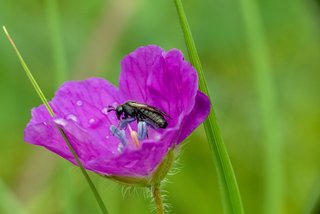Every third bite ... – why bees matter
We are in the midst of a biodiversity crisis, during which we are losing species that haven’t even been discovered yet. Thankfully, the public awareness of the importance of living things is rising. This is especially true for insects; once reviled, they are now recognized as essential ecosystem service providers under threat. Numerous studies have suggested insect declines, including bees, but the truth is that we don’t really know the conservation status of most species due to large knowledge gaps.
Among insects, bees are especially important, providing most terrestrial pollination services. Accordingly, you’ve probably seen many ads or campaigns to save the bees. There’s good reason for this, as there’s a common saying suggesting that one in every three bites results from pollination; this is both directly (MANY fruits and vegetables) and through feed for animals we eat. Much of this may not be new for you, but hopefully if you didn’t already think that bees are important, you do now.






Comments (0)
No Comments